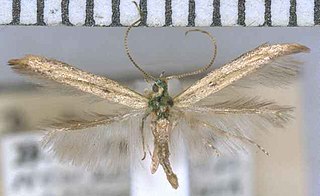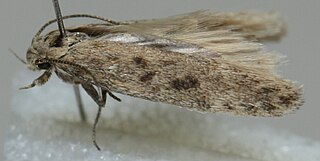
The Dead Sea Scrolls are ancient Jewish and Hebrew religious manuscripts discovered in 1946/7 at the Qumran Caves in what was then Mandatory Palestine, near Ein Feshkha in the West Bank, on the northern shore of the Dead Sea. Dating from the 3rd century BCE to the 1st century CE, the Dead Sea Scrolls are considered to be a keystone in the history of archaeology with great historical, religious, and linguistic significance because they include the oldest surviving manuscripts of entire books later included in the biblical canons, along with deuterocanonical and extra-biblical manuscripts which preserve evidence of the diversity of religious thought in late Second Temple Judaism. At the same time they cast new light on the emergence of Christianity and of Rabbinic Judaism. Most of the scrolls are held by Israel in the Shrine of the Book at the Israel Museum, but their ownership is disputed by Jordan due to the Qumran Caves' history: following the End of the British Mandate for Palestine in 1947, Jordan occupied the area in the 1948 Arab-Israeli War, and Israel captured both it and several Scrolls claimed by Jordan in the 1967 Six Day War. As a result, some of the scrolls are still in Jordan and are now displayed at The Jordan Museum in Amman. Ownership of the scrolls is also contested by the State of Palestine.

The De Havilland Canada DHC-8, commonly known as the Dash 8, is a series of turboprop-powered regional airliners, introduced by de Havilland Canada (DHC) in 1984. DHC was later bought by Boeing in 1988, then by Bombardier in 1992; then by Longview Aviation Capital in 2019, reviving the De Havilland Canada brand. Powered by two Pratt & Whitney Canada PW100s, it was developed from the Dash 7 with improved cruise performance and lower operational costs, but without STOL performance. Three sizes were offered: initially the 37–40 seat -100 until 2005 and the more powerful -200 from 1995, the stretched 50–56 seats -300 from 1989, both until 2009, and the 68–90 seats -400 from 1999, still in production. The QSeries are post-1997 variants fitted with active noise control systems.

The Gelechiidae are a family of moths commonly referred to as twirler moths or gelechiid moths. They are the namesake family of the huge and little-studied superfamily Gelechioidea, and the family's taxonomy has been subject to considerable dispute. These are generally very small moths with narrow, fringed wings. The larvae of most species feed internally on various parts of their host plants, sometimes causing galls. Douglas-fir (Pseudotsuga) is a host plant common to many species of the family, particularly of the genus Chionodes, which as a result is more diverse in North America than usual for Gelechioidea.
Dendrophilia is a genus of moths in the family Gelechiidae.

Helcystogramma is a genus of moths in the family Gelechiidae. The genus was erected by Philipp Christoph Zeller in 1877.

Thiotricha is a genus of moths in the family Gelechiidae, subfamily Thiotrichinae.

Batrachedra arenosella, the armoured scale eating caterpillar or the coconut moth, is a species of moth of the family Batrachedridae. It was first described by Francis Walker using specimens collected in Auckland, New Zealand. It has been hypothesised that the New Zealand moth may contain two distinct species. As well as the moth species in New Zealand, this name has been applied, perhaps incorrectly, to moths found in India, Indonesia, the Malay Peninsula, and Réunion, as well as in Australia, from the Northern Territory and northern Queensland to New South Wales and South Australia.

Dichomeridinae is a subfamily of moths in the family Gelechiidae.

Chionodes distinctella, the eastern groundling, is a moth of the family Gelechiidae. It is found in almost all of Europe, as well as most of Russia, Kazakhstan, Central Asia and North Africa. The habitat consists of dry, rocky heath and meadows and the verges and rough pastures.

Scrobipalpa obsoletella, the summer groundling, is a moth of the family Gelechiidae. It is found in most of Europe, Turkey, the Caucasus, from Iran to Asian Russia (Transbaikal) and Mongolia. It has also been recorded from New Zealand, South Africa and North America, where it is probably an introduced species. The habitat consists of coastal salt marshes and sandy beaches.

Aroga trialbamaculella, the red-striped fireworm moth, is a moth of the family Gelechiidae. It is found in the United States, where it has been recorded from Maine to Florida and from Illinois to Texas.
Bagdadia salicicola is a moth in the family Gelechiidae. It was described by Kyu-Tek Park in 1995. It is found in Taiwan, Japan and Hainan, China.
Bagdadia claviformis is a moth in the family Gelechiidae. It was described by Kyu-Tek Park in 1993. It is found in the China, the Russian Far East, Korea and Japan.

Thiotrichinae is a subfamily of moths in the family Gelechiidae.

Anisoplaca ptyoptera is a species of moth in the family Gelechiidae. It was described by Edward Meyrick in 1885 and is endemic to New Zealand. This species is found throughout the North and South Islands and prefers habitat where its host plants are common. The larval hosts of this moth are species in the genus Carmichaelia and the larvae stem mine the host plant. However larvae have also been observed feeding on gorse species and as a result their potential as a biological control for gorse has been researched. This behaviour has only been recorded in the Canterbury and Otago regions. A. ptyoptera overwinters as larvae and while in that life stage can be parasitised by species of wasp in the genera Zealachertus and Diadegma. Pupation begins in October. Adult moths are on the wing from October until May with peak emergence occurring in January. The adult moths come in two size classes and should the size of the female be in the larger class fecundity is improved. It is likely that this species has only one brood a year.

Kiwaia caerulea is a moth in the family Gelechiidae. It was described by George Hudson in 1925. It is found in New Zealand.

Aristotelia paradesma is a moth of the family Gelechiidae. It was described by Edward Meyrick in 1885 and is endemic to New Zealand. This species has been observed on both the North and South Islands. The larvae feed on Coprosma species creating and living in stem galls. The adults are on the wing from November to March and are attracted to light.
Ronald William Hodges, known as Ron, was an American entomologist and lepidopterist.












